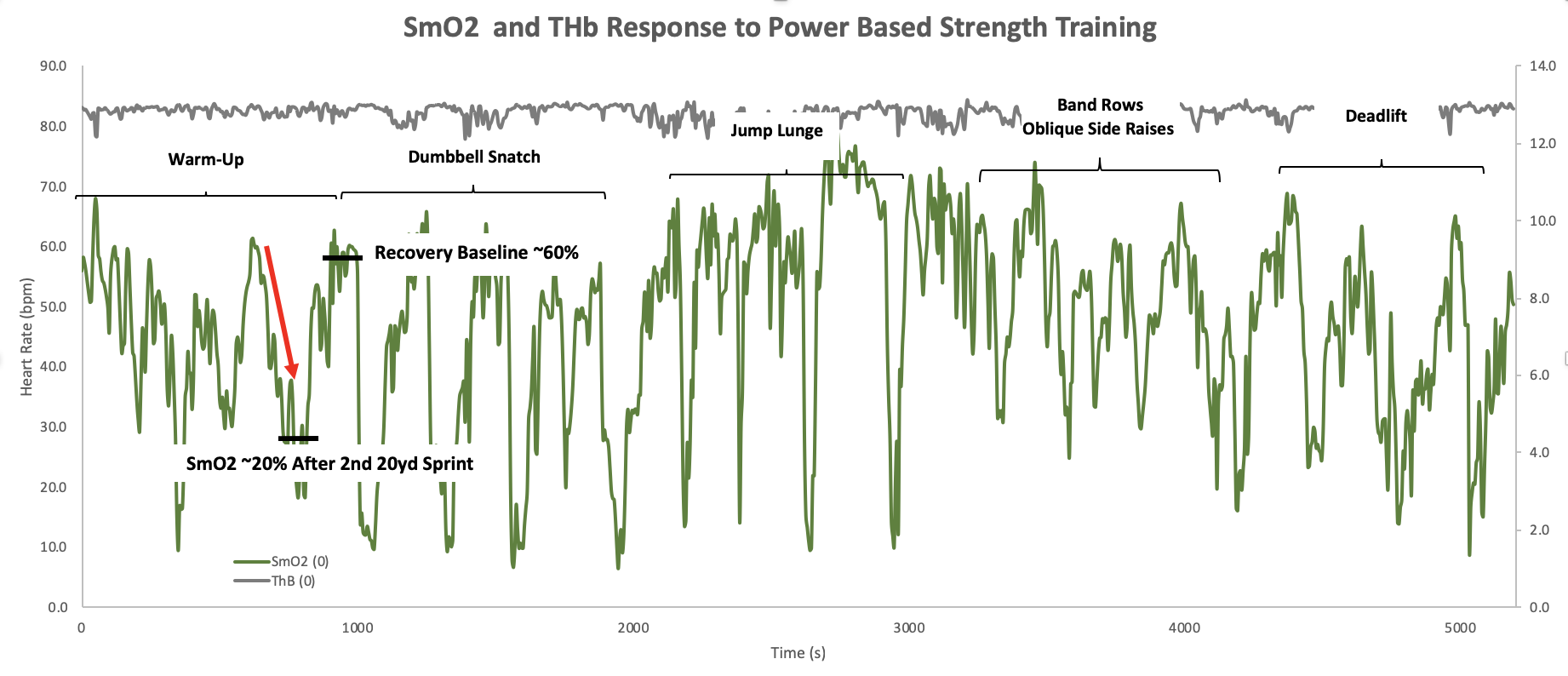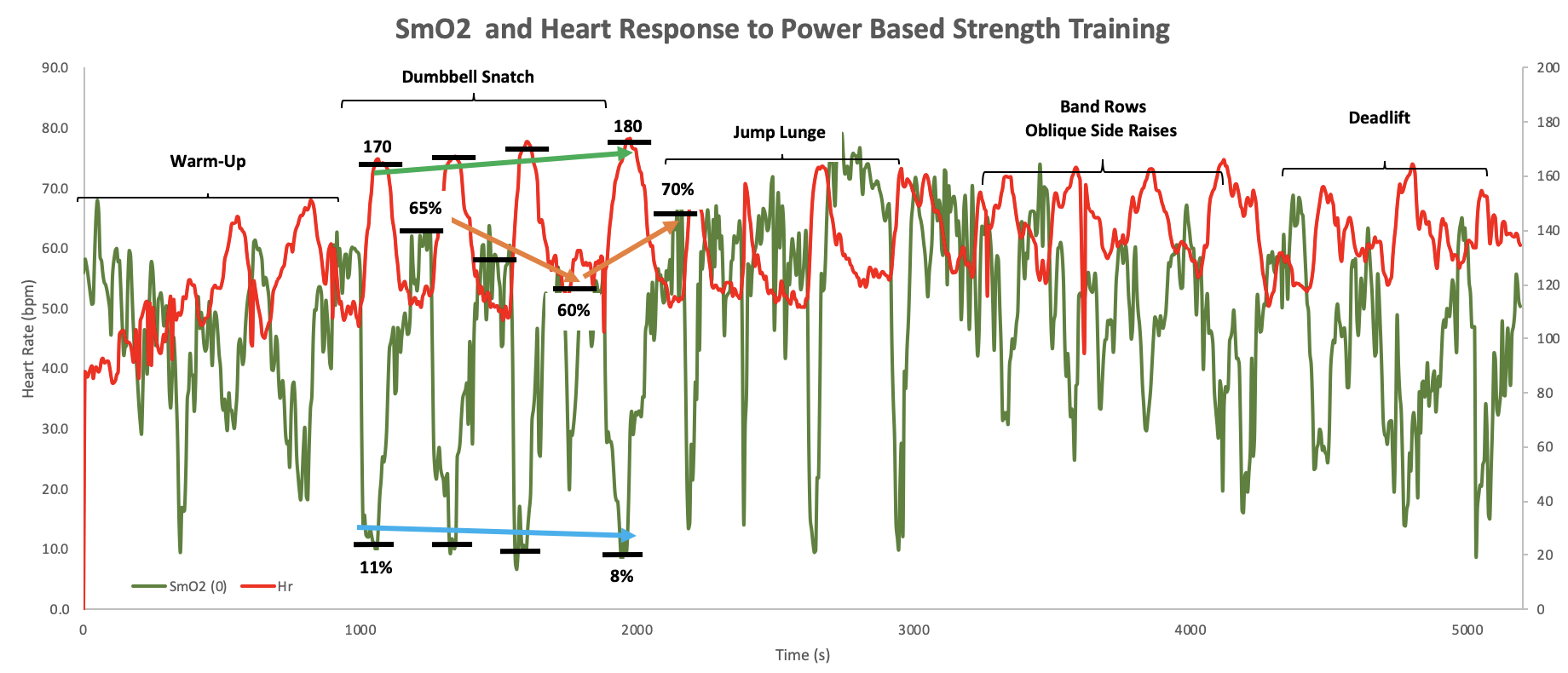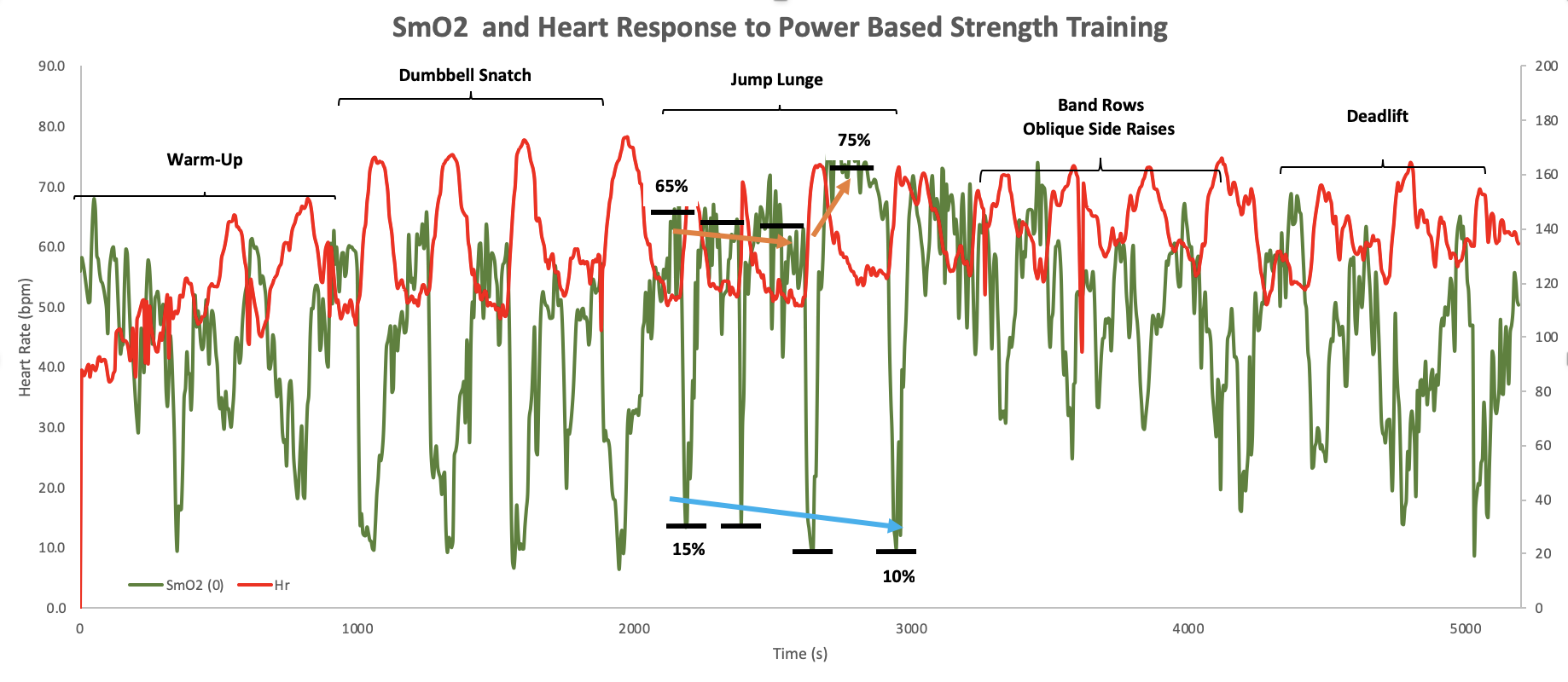Case Study 2: Using Moxy to Dictate Power Training, Sets, Reps, and Recovery
We have recently explored the benefits of strength training as well as outlining how to implement strength training for endurance athletes. In the last blog post we explored how Moxy can be used to dictate an endurance/hypertrophy strength session. In this post I want to provide another case study, as to how I am currently using my Moxy Monitor to dictate my power-based weight lifting sessions. The strength training session was completed on Jan. 23th, and consisted of 4 sets of 15-20 reps of dumbbell snatches, lunge jumps, quick band rows, weighted oblique twists, and 4-6 reps of deadlift with 3-5min rest. The goal of the workout was to push SmO2, (moxy on right v.lateralis) as low as possible within the 15-20reps, as well as maintain top speed of movement (power), then recover, until SmO2 reached enhanced recovery, which means that SmO2 remained steady above baseline recovery.
Like always the first step was to determine the Recovery Baseline, after a ten-minute warm-up, consisting of dynamic drills, foam rolling, and mobility, finished with 2, 20yd Sprints, shown in figure 1, which is the absolute lowest SmO2 to recover back to after each set and was ~60%.

Figure 1: Baseline Recovery after a warm-up was determined to be ~60%
An oxygenation value of 60% is fairly normal in resting or lightly warmed tissue, this indicates that my muscle could have been warmed up further, through low intensity cycling or cardio.
It should be noted, that THb remains fairly flat throughout each exercise. There are some points where THb falls towards the end or immediately following an exercise, this could be indicative of a contractile force within the muscle that acts to compress, but not fully occlude a blood vessel, resulting in less blood arriving at the v. lateralis. This can be explained, at least partially, by the fact that the weights that were being lifted could not elicit >50% of the leg muscle contractile force necessary to fully occlude blood vessels.
After the warm-up I started 4 sets of 15-20 Dumbbell Snatch exercises switching hands after every five reps, shown in figure 2, it’s evident that from the 1st to 4th set of dumbbell snatches, blood delivery started to increase, shown as an increase in heart rate. SmO2 was able to recover to baseline however, it got progressively lower compared to the recovery after the first set which reached a recovery of ~65%. After the 4th set SmO2 reached 70%, heart rate reached 180, together these indicate that blood delivery was increased to the working muscle, with a subsequent vasodilation of the blood vessels. SmO2 decreased from 11 to 8% throughout the four sets which indicates that the muscle was able to maintain its oxygen gradient throughout.

Figure 2: Decreasing recovery baseline, indicating inability to recover, until after third set where recovery was extended, and continuing decreases in performance baseline.
The next major set that was monitored were jump lunges, shown in figure 3, below. 4 sets of 20 were completed with rest periods of about 3min, the peak recovery SmO2 values increased during each subsequent recovery period, and performance SmO2 decreased throughout, indicating a continued ability to de/reoxygenate. There was a longer rest after set three, which allowed the recovery SmO2 to reach ~70% which is the highest recovery SmO2 of the workout. Also, my legs were feeling pretty tired at this point.

Figure 3: Decreasing Performance SmO2, with slightly decreasing recovery baseline, followed by super compensation SmO2 following 4th set.
Since band rows and oblique side raises are core, and upper body exercises, and deadlift, primarily engages the hamstring, and back muscles, and I was not monitoring SmO2 in these muscles there isn’t much to glean from the latter portion of the workout. However, if I were to monitor SmO2 during these exercises, it’s recommended to place the Moxy on the latissimus dorsi. The heart rate response was still measurable but the SmO2 data was extremely noisy, most likely due to changes in stance during each exercise.
Summary:
Moxy monitor is not just useful for endurance events but is useful for strength workouts, and can be used to dictate sets, reps, and rest periods during different exercises. This blog post illustrates, the usefulness of Moxy which provides the ability to monitor, in real-time, the skeletal muscles’ capacity to de/reoxygenate.
Three key takeaways/recommendations:
- The goal of power training should be to maintain the ability to deoxygenate during subsequent sets.
- Make sure that the muscle is adequately warmed up, and recovery baseline is reached between each set, my warm-up may have been insufficient to fully warm the muscles, and rest may have been too long to maintain a high level of SmO2.
- Even though heart rate may continue to increase, SmO2 may not continue to decrease.
